 What are Insectary Plants?
What are Insectary Plants?
Every plant that requires the services of insects or other pollinators, in order to be able to reproduce, will have a way to attract those pollinators. And not all, but most plants require this.
In Permaculture, however, the term “Insectary Plants” are those plants that attract an unusually high number of insect species. Many plants are specialists, and only attract one or two particular species, or only certain types of species. This is fine. It takes all kinds and diversity is important. Insectary plants, however, can be thought of as generalists, because they attract a broad range of insects. These insects, that we refer to as “beneficial,” fall into two categories: Pollinators and Predators
Pollinator Insects & Predator Insects
As the names imply, pollinators pollinate and predators…well, prey on other insects.
The Importance of Pollinators
Without pollination, there can be no seed production, no reproduction.
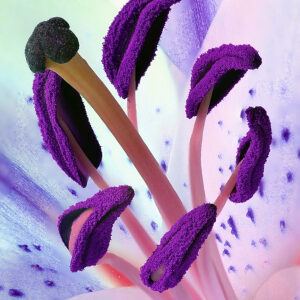
The pistil is the female part of the flower’s reproductive organ. It is the longer central stalk in this photograph of a lily, the one with the darker shape on top. The pistil produces ovules, the plant equivalent of an animal’s ovum, and consists of the stigma, style, and ovary. The stigma is what captures the pollen.
The stamens are the male reproductive organ of the flower. In this lily, they are the purple organs, called anthers, on the ends of the shorter, thinner stalks, called filaments. They produce the pollen grains, which is the plant version of sperm. And just like with animals, there are way more sperms than eggs.
In order to start producing seeds, pollen grains must get onto the end of the pistil, where they are absorbed and the seeds are conceived. In some species they only have to get to the pistil in the same flower, in others, they have to travel across to different plants. But once conception has started, the flower dies off and the seed pod starts forming.
There are many different shapes, configurations and variations of pistils and stamens, as well as seed pods, across the vast spectrum of plant species, but this is the basic idea, common to them all.
When pollinators, like honey bees, are out looking for pollen, it’s for their own reason. They need to make honey, feed the hive. Whatever pollinating they do by accidentally brushing pollen grains onto the pistil is not their concern. Food is. But maybe they know. Maybe they are not just harvesters but guardians, as well. The same way the plant knows to over produce the pollen, because most of it will get eaten. However much consciousness there is with each party, it is symbiosis at its finest.
What are the most important Pollinating Insects?
Honeybees are the first pollinator most people will think of. But there are thousands of pollinators, including houseflies, mosquitoes, birds, bats and even lizards.
 Through long periods of co-evolution, certain pollinators have evolved along side the flowers they like best. The hummingbird hawkmoth, for example, has a long tongue, specially suited to flowers with a very deep throat.
Through long periods of co-evolution, certain pollinators have evolved along side the flowers they like best. The hummingbird hawkmoth, for example, has a long tongue, specially suited to flowers with a very deep throat.
And flowers, too have the evolved shapes, scents and colors proven to be the most attractive to the pollinators they need most.
That being said, the bulk of the pollination is done by these guys–
- Bumblebees
- Digger bees
- Halictid (sweat) bees
- Honeybees
- Hoverflies
- Leafcutter bees
- Mason bees
- Solitary bees
- Wasps
- Moths
- Butterflies
- Beetles
Plants that Attract Pollinating Insects: A List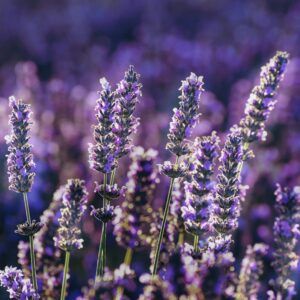
This list is certainly not complete. But it’s a good place to start. You could get all OCD and plant flowers according to their blooming time, so it co-incides with when your fruit trees and vegetables will also be flowering. But for the highest level of joy, beauty and satisfaction, simply plant as many, in the highest variety as you can. And add to them every year. Do it all across your property. Let Nature take Her course. The bees will remember and will keep coming back.
- Abelia
- Anise hyssop
- Aster
- Bee balm
- Bells of Ireland
- Black eyed Susan
- Blanket flower
- Borage
- Butterfly weed
- Caryopteris
- Catmint
- Chamomile
- Chives
- Clover
- Comfrey
- Cornflower
- Cosmos
- Cuphea
- Dahlia
- Dandelion
- Daisey
- Delphinium
- Echinacea
- Gayfeather
- Hydrangeas
- Joe pye weed
- Lantana
- Larkspur
- Lavender
- Lobelia
- Lupine
- Milkweed
- Peony
- Penstemon
- Poppy
- Ranunculus
- Saffron crocus
- Salvia
- Snapdragons
- Sunflower
- Yarrow
- Zinnia
The Importance of Predators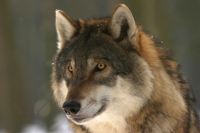
The common belief is that insects, also known as pests, are destructive, invasive and harmful. They ruin gardens and most people are frantic to kill them all. This is not very insightful. Permaculture, however, fosters the organic-based belief in “it’s all alive; it’s all intelligent; it’s all connected.” It correctly understands the garden and orchard as what it is; a community, an ecosystem.
Insects are very important community members.
It’s the Eat And be Eaten, All You Can Eat Cafe! Or, it should be. Just like in the animal realm, a lack of predators means disaster on every level. When wolves were re-introduced to Yellowstone, for example, everything fell back into a proper balance. There were increased beaver, aspen and vegetation populations, healthier willow stands, drought reduction…even the rivers became healthier.
It’s the same with the insect world. Without a full spectrum of predators, all hell breaks loose.
What are the Most Important Predatory Insects?
They’re all important. You can’t rate your friends. But here is a list of the most famous ones. The way some of these predators kill is pretty gruesome. Ladybugs, and their larva, merely eat their prey, aphids, mostly. But parasitic wasps inject their victims, caterpillars, with their eggs. Their hatchlings eat them alive from the inside. It’s quite disturbing, but well within the continuum of these creatures to die like this, so…it’s life. We need to realize that death is an integral part of life and that suffering is inherent. It’s not just pretty flowers. Also, most predatory insects have a particular range of what they eat or feed to their young. There’s no one insect to go for. You want to attract as many different kinds as you can. Lots of overlap.
- Aphid midge
- Assassin bug
- Big eyed bug
- Green lacewings
- Ground beetles
- Hoverflies, aka syrphiel flies or flower flies
- Ladybugs, and their larva
- Minute pirate bug
- Parasitic wasps
- Praying mantis
- Predatory mites
- Spiders
- Spined soldier bug
- Trichogramma wasp
Plants that Attract Predatory Insects: A List
A lot of these are culinary and medicinal, too. So you can really stack functions with them…which is one of the prime directives of permaculture.
- Alfalfa
- Alpine cinquefoil
- Angelica
- Basket of gold
- Buckwheat
- Bugle
- Butter and eggs
- Butterfly weed
- Caraway
- Coriander
- Cosmos
- Crimson thyme
- Dandelion
- Dill
- Dwarf alpine aster
- English lavender
- Fennel
- Fern leaf yarrow
- Feverfew
- Four-wing saltbrush
- Gloriosa daisy
- Golden marguerite
- Goldenrod
- Hairy vetch
- Lavender globe lily
- Lemon balm
- Lobelia
- Marigold
- Masterwort
- Maximillian sunflower
- Orange stonecrop
- Parsley
- Pennyroyal
- Phacelia
- Poached-egg plant
- Purple poppy mallow
- Queen Anne’s lace
- Rocky mountain penstemon
- Spearmint
- Spike speedwell
- Statice
- Stonecrop
- Sulfur cinquefoil
- Sweet alyssum
- Wood betony
- Yarrow
- Zinnia
Insectary Plants as Cover Crops
Planting a variety of flowering leguminous cover crops attracts beneficial insects, like the minute pirate bug, big-eyed bug, and fire ants who prey on damaging earworms and budworms. These insectary plants include clovers such as balansa, crimson, red, white and sweet, subterranean clover. Adding field peas, hairy vetch, buckwheat, canola and mustards extends the bloom period. There will always be something flowering, even if it’s not all at the same time. And predator bugs will move around from cover crop patch to cover crop patch, so there is a constant state of patrolling going on.
These plants are also all nitrogen fixers that increase beneficial soil organisms and keep out competing weeds. So it’s a win-win-win-win situation.
Insectary Plants in Food Forests
- Bee balm
- Borage
- Buckwheat
- Carrot
- Celery
- Clover, many types
- Comfrey
- Coriander
- Dill
- Fennel
- Golden Marguerite
- Lavender
- Lily
- Mint
- Onion
- Queen Anne’s lace
- Sunflower
- Yarrow
In Conclusion
The more we can incorporate the natural cycles of life, death, decay and regeneration into our gardening process, the more closely we mimic Nature and provide niches for Nature simply take over, removing the burden from our weak little shoulders, the stronger our garden will be. No gross chemical fertilizers or pesticides here! The bugs know what they’re doing. If we encourage them instead of hindering them, we all prosper.
Leave a comment below…I love to hear from you all!


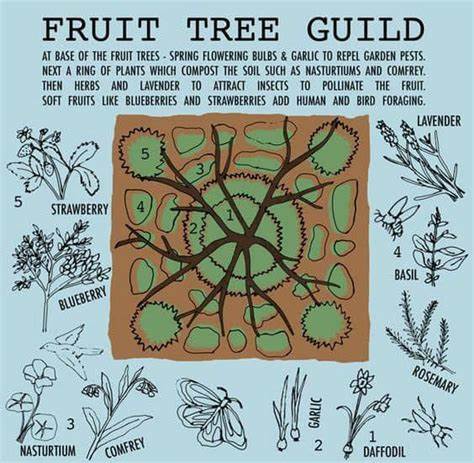


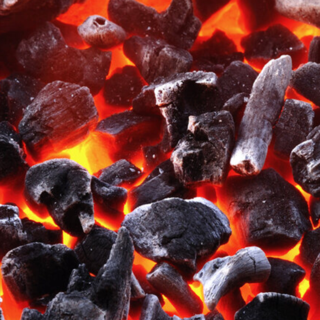

Hi Anna-Vita,
I enjoyed reading your article on insectary plants. It’s clear that you have a deep understanding of the importance of these plants in our gardens and ecosystems. I especially appreciate your emphasis on the need to attract both pollinators and predators. As you point out, a healthy ecosystem is one that is balanced, and this balance is only possible with a diversity of insect life.
I’m also glad that you included a list of insectary plants that are both beneficial and attractive. This will be helpful for gardeners who are looking to attract more beneficial insects to their gardens.
Overall, I think your article is a valuable resource for gardeners who are interested in attracting more beneficial insects to their gardens. I would recommend that you consider adding more detail about the different types of insectary plants and the benefits of attracting beneficial insects.
Thanks for sharing your article!
Hey Jeffery
I do actually plan to write in depth looks at each of the plants. Kinda like writing an encyclopaedia! There are so many! At least I have no shortage of things to write about, huh?!
😀
Anna